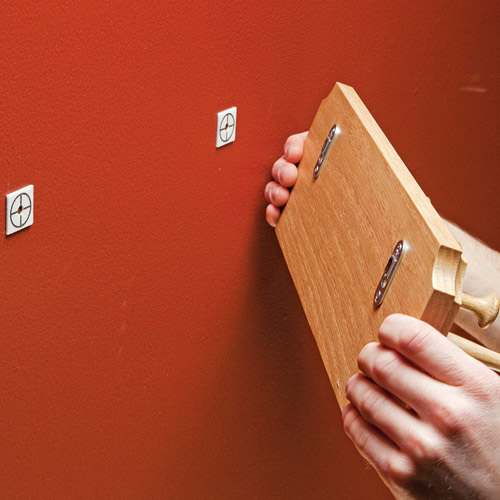When you want to hang a shelf, picture frame, clock, or candle sconce on a wall but don't want the mounting screws to show, use an inexpensive keyhole router bit to cut screw slots instead. Then, when you hang the piece, it will appear to float on the wall.
How To Install Metal Keyhole Hangers
And, with keyhole slots you don't need special hardware. Once you've got the tools set up, you can cut multiple slots quickly and easily. Table-rout for precise slots First, choose a keyhole bit with an entry-hole cutter slightly larger in diameter and thickness than the head of your screws.
As a variation of this answer you can use any of these cabinet shelf hangers, called keyhole fittings, (which can be found in your local hardware store). Enter image description here. They are attached to the back of the shelf somewhere where the material is thick and strong enough. You have to make a. Keyhole hangers are sturdy, invisible options that work well for shelves with open backs or wall cabinets where you might not want to sacrifice the space to build in a cleat. Even though you don’t install them until after the fact, you have to consider them in the initial construction. In Chris Becksvoort’s cherry wall shelf (above). A couple of my current projects really need hangers that will mount flush to the wall. I don't have a router to cut the holes, though. I'm just a hobbyist. I have been cutting a series of holes for each with my drill press and then cleaning up with an exacto blade or a bur. But I am wondering if the.
The slot cutter should be slightly larger than the screw's shank. (Doing all this allows the screw to drop in and slide along the slot easily.). These slots demand precision—especially when using more than one—because if they're off by a little, your project could hang crooked.
So we like to rout them on a router table; a handheld router could veer off course while cutting, compromising the slot. One or two slots should hold most projects sufficiently. To make keyhole slots, first lay out their locations. For projects with a single horizontal keyhole slot, locate the centerpoint of the project in the middle of the slot to allow you to adjust it for level. For a single vertical slot, make sure it's centered side-to-side and located on the upper half of the project. Next, decide where to plunge the entry hole for each slot. For a keyhole slot that will be on a vertical element of your project, make sure to locate the entry hole at the bottom of the slot.

For horizontal slots, it doesn't matter which direction you plunge and cut as long as you do all slots the same. Mark the center of the entry hole and transfer that 'start line' to the front of the workpiece. Install the bit in your router table, and set its height to leave at least a 3⁄ 16 '-thick shoulder. (See the keyhole slot below.). With one end resting on the table and against the fence, lower the project onto the bit, keeping the 'start' line aligned with the bit center.
Now rout the slots With the router running at maximum speed, place the workpiece above the bit and against the fence with the start line and bit centerline aligned. Gripping it tightly, slowly pivot the project down onto the bit, as shown above. Once the project rests on the tabletop, slide it to rout the slot, stopping when the stop line reaches the bit centerline ( below). Without moving the project, use one hand to shut off the router. Wait for the bit to stop spinning before backing the board off the bit.
Failure to do so could damage the slot and project. Repeat for the remaining slots.